Subtotal: $
Checkout
Plough’s Dori Moody spoke to Pavel Dorogoy in Kharkiv, in phone calls during curfew that were repeatedly interrupted by air raid sirens. The following text is based on these interviews, edited for clarity and length.
In the first days of the war, journalists and photographers heard that a woman had been injured in a house on the outskirts of Kharkiv. The blood smeared next to the icons of Mary, Jesus, and Saint Nikolai is from an older woman who survived.
“Are we able to see the broken destinies of ordinary people behind the veil of rage?”
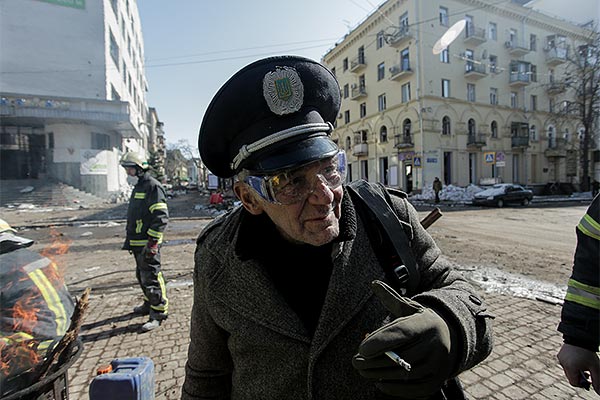
Early in the war, people came to volunteer or bring supplies. I don’t know this man wearing the hat of a police chief. He just wanted to talk. Many older people are staying in Kharkiv. They don’t know where else they would go.
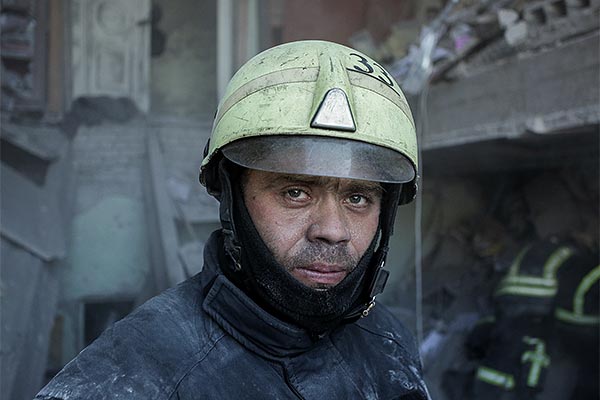
The regional administrative headquarters on Kharkiv’s Freedom Square was destroyed by a missile on the first of March. Weeks later, firefighters were still unearthing bodies. This firefighter is part of a brigade from another city, Dnipro.
“I am surrounded by heroes. Everyone I see now is a hero. People of steel with big hearts. Each of them is willing to give his life to save another. Some of them have not seen their homes, families, or loved ones for twenty-two days. What is more important, to save our state or our people’s lives?”
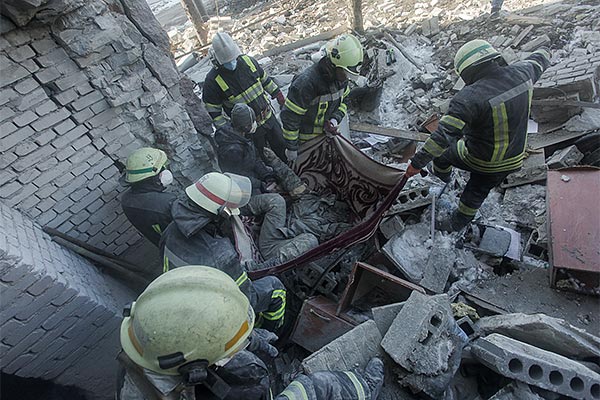
Among the bodies found in the building was a seventy-two-year-old man, his reading glasses still in his pocket. Another body was that of a twenty-one-year-old woman. Both had volunteered to defend their country.
“Maybe the price we are paying for our unity and self-identity is too high. Are we ready to look into the eyes of those whose relatives have died in the name of the values we are fighting for?”
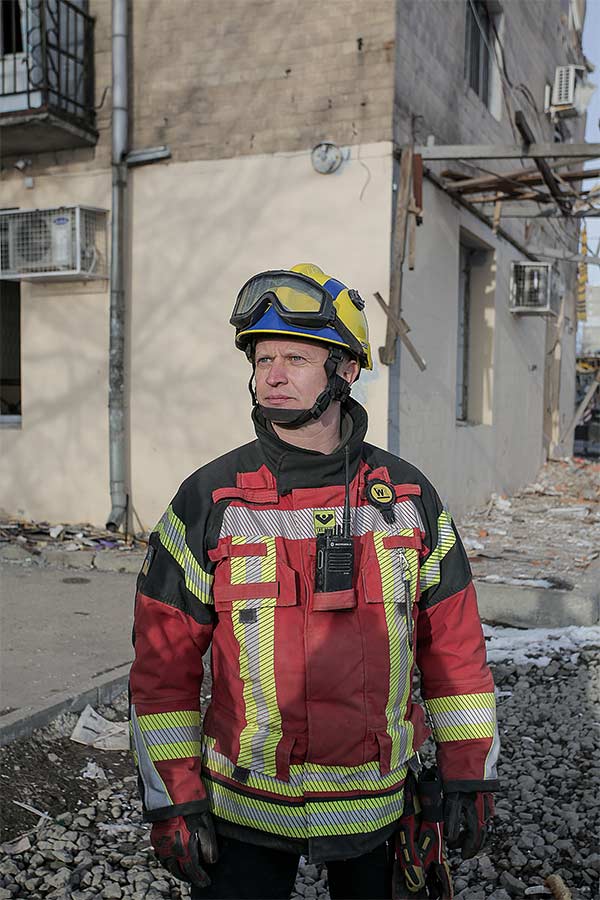
This firefighter has recovered dead bodies and saved many people in the weeks since the war broke out. He works every day but his own mother lives in the grey zone, where there is little food and water. He cannot rescue her. She cannot phone him. He doesn’t know if she is alive or dead.
“Every day they see destruction, death, fire, suffering, and pain. This is their reality now.”
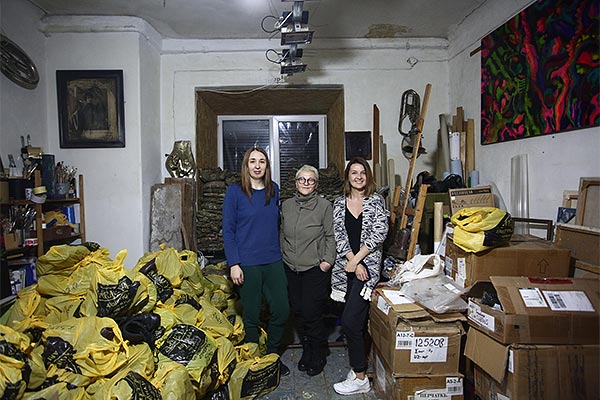
These are my friends Oksana, Irina, and Natalya, who now live in the basement of what was an artists’ workshop. Before the war, they were artists, but now they are volunteers assembling kits with boots and ammunition for territorial defenders.
“Accept the fact that our lives are divided into BEFORE and AFTER. Now the phrase BEFORE THE WAR appears in our vocabulary.”
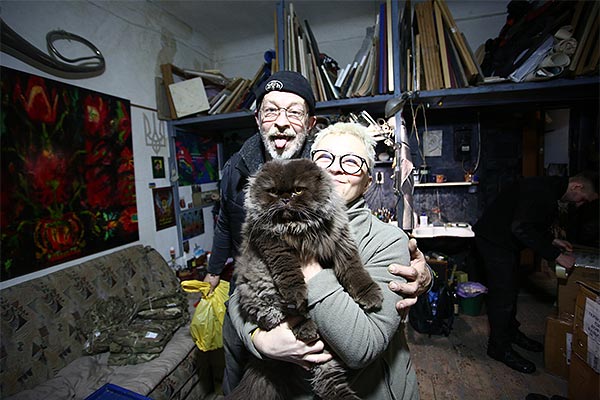
My friends are not only handing out uniforms, but also doing the valuable work of preservation. In the safety of this basement they are packing up the photographic art exhibits from the Kharkiv School of Photography; these pieces of art cannot be abandoned to destruction by the Russians.
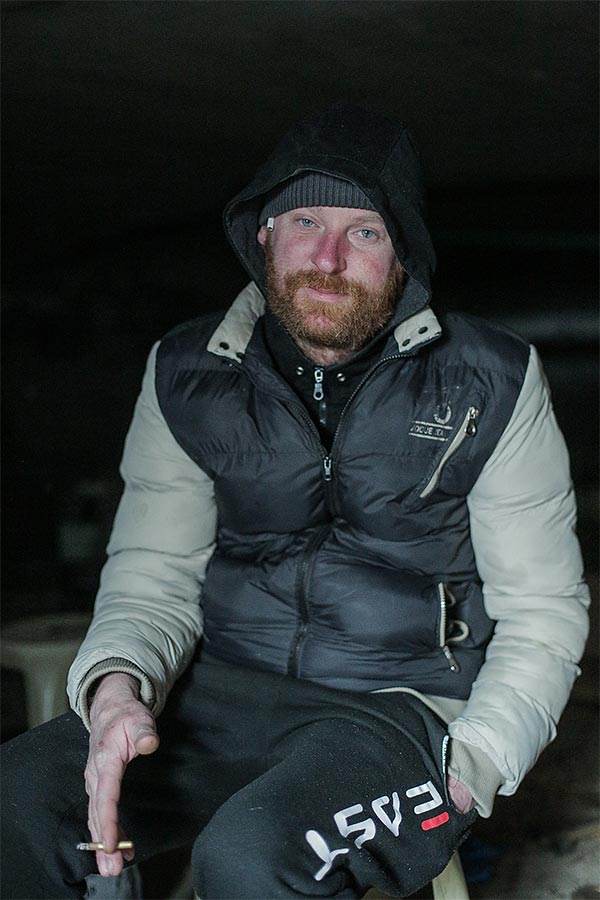
This man and others like him are in the residential area of Saltivka, a dangerous area close to the Russian military. Most of the people remaining here are the marginalized. They are staying put, waiting and drinking. In large lettering outside their broken shelter is painted the word HUMANS in Russian. They are trying to survive too. They deserve to live, just like everyone else.
“There are no more boundaries. There is no more personal space. There is no safe place anymore. There is no more peace. War has destroyed everything!”
Pavel Dorogoy lives in Kharkiv, Ukraine. He specializes in the architectural photography of late-socialist buildings, many of which are being destroyed by war.
Already a subscriber? Sign in
Try 3 months of unlimited access. Start your FREE TRIAL today. Cancel anytime.





